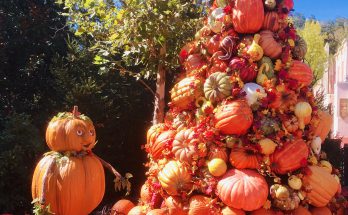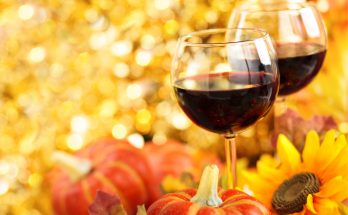A whole roasted goose makes a delicious and nutrient dense meal around the winter holidays, just when we really crave and need the fat. Below is one way to stuff a goose, but other cooks might add chestnuts, shallots and/or ground pork, and other herbs and spices. If you do not have fresh thyme, rosemary, and sage, you may substitute dried, but as I learned in France, fresh ingredients are one of the secrets to success in cooking!
Preparation Time: 10 minutes
Cooking Time: 1.5 to 3 hours, depending on your oven and the size of the goose
Serves 8
8 to 10 pound (3.6 kg to 4.5 kg) goose
2 tablespoons coarse sea salt
1 to 2 clementines, peeled and segments separated
2 to 3 small onions, halved
2 to 3 bay leaves
Several sprigs of fresh thyme
Several sprigs of fresh rosemary
Handful of fresh sage leaves
Cooking Thermometer
Preheat the oven to 395˚F (200˚C). Rub the goose with one tablespoon of coarse sea salt. Stuff the goose with the clementines, onions, herbs, and remaining salt, and place the goose in a large oven-safe dish.
Place in the oven uncovered and allow to roast for up to three hours, basting it in its own juices and fat with a spoon every half hour. Spoon out some of the fat during cooking to use for sautéing accompanying vegetables or to make “Sarlat Sautéed Potatoes,” which are essentially potatoes sautéed in duck (or goose) fat with salt and herbs. This potato dish is named after the medieval town of Sarlat, in the heart of the French Southwest where the venerable duck (and goose) fat reigns. You can find the recipe in my book, The Bordeaux Kitchen, along with other French regional poultry specialties.
After the first hour of cooking, reduce the heat to 350˚F (175˚C) for the remaining time. Check the internal temperature of the meat after an hour and a half of cooking by placing a meat thermometer into one of the thighs. I also gauge the temperature in the body (breast) of the goose. You are looking to reach an internal temperature of about 165˚F (74˚C) – slightly higher is okay. Goose, like duck, is considered a red meat and can be eaten slightly pink, unlike chicken. For a roast chicken you would be looking to reach an internal temperature of about 180˚F (82˚C).
Continue to baste the goose with the liquid fat from the bottom of the pan, checking the internal temperature about every 15 minutes, so as not to overcook.
Once the goose has reached an internal temperature of about 165˚F (74˚C), carve and serve with the liquid fat drizzled over each serving. Serve with dried fruit, red cabbage sauerkraut, boiled potatoes with butter and parsley, roasted Brussel sprouts, or other roasted vegetables (roasted in goose fat, of course!)
Wine Pairing Tip:
Try pairing roasted goose with a full-bodied red Cahors or a tannic Madiran, both containing the Tannat grape and both hailing from the French Southwest, where they are almost meant to compliment the richness of the goose.



